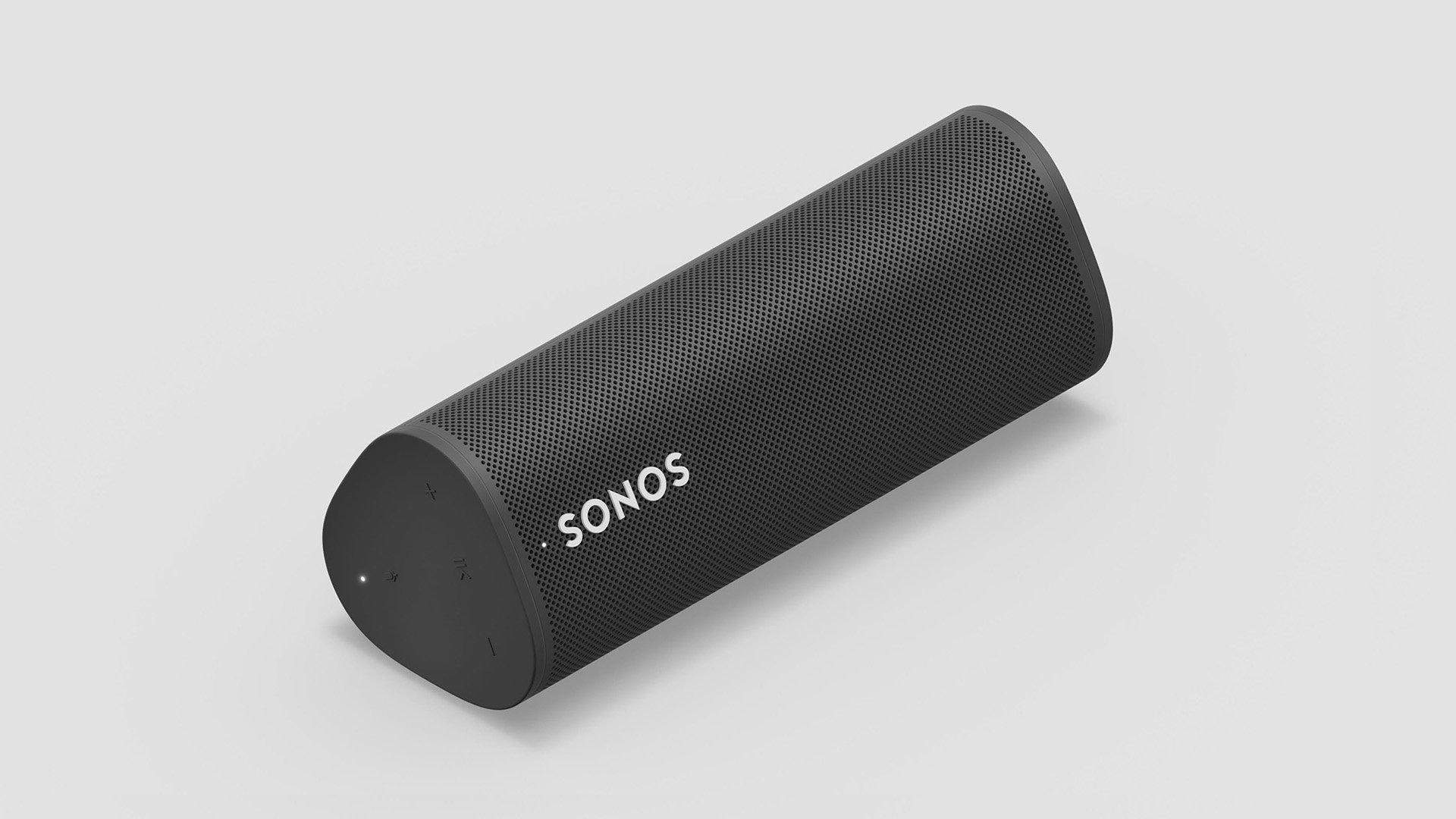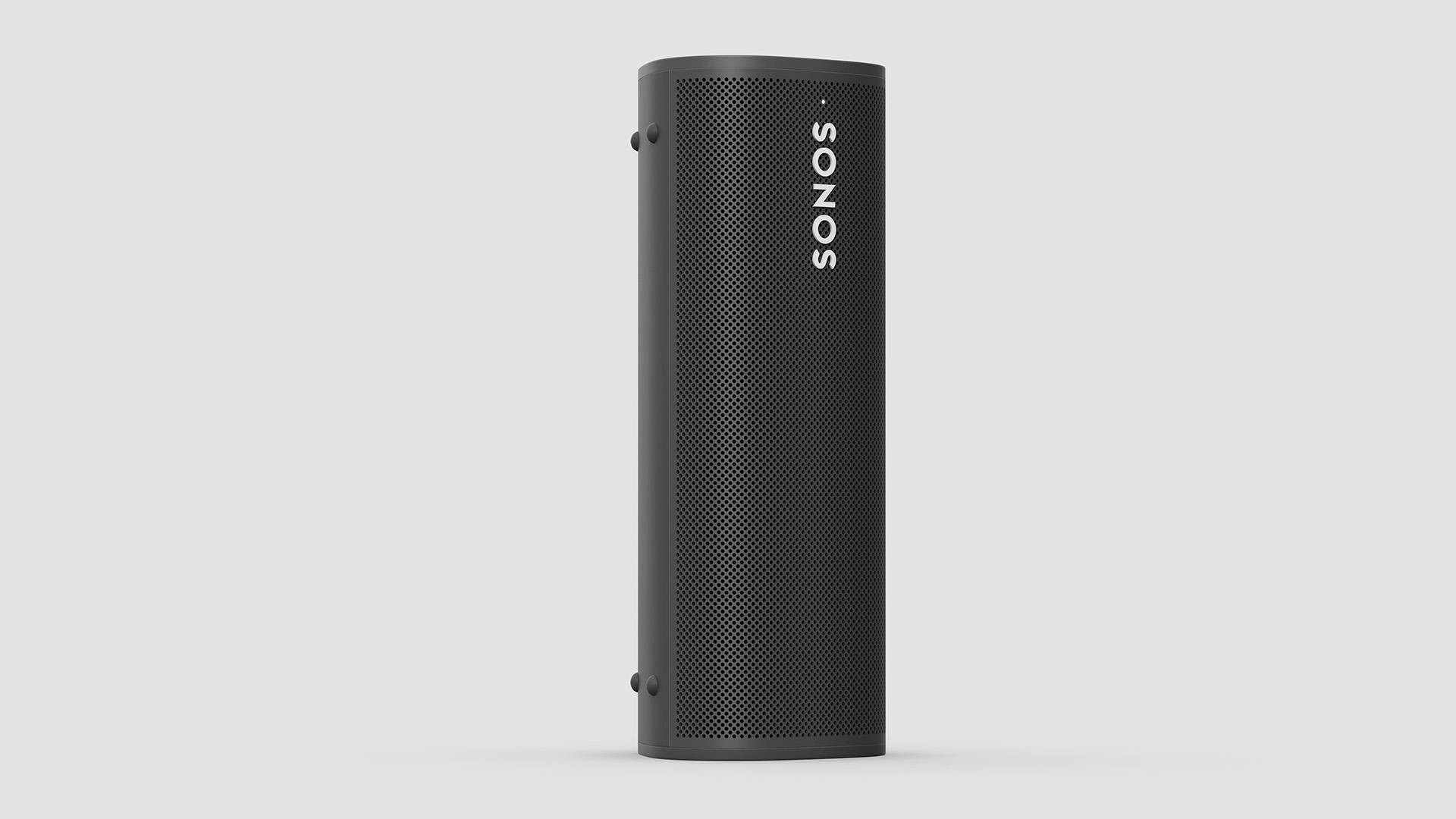Sonos Roam SL vs Sonos Roam: which Bluetooth speaker will be the best?
What are the big differences between the two Sonos models?

The new Sonos Roam SL is the company's most affordable Bluetooth speaker yet. It's essentially a microphone-free version of last year's Sonos Roam, an accomplished smart speaker that offers all-day battery life and a sleek waterproof design.
So, should you splash out on the voice-activated Roam, which offers access to Amazon Alexa and Google Assistant, or save yourself £20 / $20 / AU$10 and opt for the slightly-less-premium Roam SL?
We've yet to review the Sonos Roam SL but we can give you a rundown of what they have to offer, so read on for all the details...
- Sonos wireless headphones rumoured to be launching soon
Sonos Roam SL vs Sonos Roam: price
The Sonos Roam – billed as the company's "first true portable outdoor speaker" – was unveiled on 9th March 2021 and officially released on 20th April 2021. It debuted at £159 / $169 / AU$279 but Sonos has since raised the price to £179 / $179 / AU$299.
The Sonos Roam SL was announced on 1st March 2022. Pre-orders for the lower cost version of the Roam are open now at sonos.com and the speaker will begin shipping on 15th March 2022. The price is £159 / $159 / AU$269.
Clearly, the Sonos Roam SL is the pennywise option here, but sacrifices have been made in terms of features. Let's take a closer look...
Sonos Roam SL vs Sonos Roam: design

The Toblerone-shaped Sonos Roam is compact (17cm tall) and comparatively light (430g). It's ideal for picnics and pool parties since it carries an IP67 rating (it can be completely submerged in three feet of water for up to 30 minutes).
The latest hi-fi, home cinema and tech news, reviews, buying advice and deals, direct to your inbox.
The built-in battery has the stamina for up to 10 hours of playback from a single charge, so the tunes shouldn't grind to a halt before the last guests have left. You can charge it via the included USB-C cable or a Qi wireless charger (Sonos even offers an optional magnetic wireless charger for £44 / $49 / AU$79).
The newer Roam SL is the same size and shape as its brethren and shares the same IP rating, same 10-hour battery life, and same rubberised controls. Both models can be controlled via the Sonos app and both come in Shadow Black and Lunar White colour options.
The only physical difference between these two speakers is that the Roam has a microphone button, whereas the Roam SL does not.
Sonos Roam SL vs Sonos Roam: features

The Roam and Roam SL may be two peas in a pod but there is one crucial difference when it comes to the feature set: the Roam has a built-in microphone; the Roam SL does not. As a result, the cheaper Roam SL misses out on three mic-based features...
1. Voice controls
The original Roam offers built-in access to Amazon Alexa and Google Assistant. It is possible to control the Roam SL using the above smart assistants, you would need to do it through a third-party device, such a smartphone. Much less convenient.
2. Auto Trueplay
The Roam's Trueplay calibration tech tunes your speaker(s) specifically to your room in order to deliver the best possible sound. It uses a microphone to record the way that sound waves bounce around a room, so it won't work with the mic-less Roam SL.
3. Sound Swap
Sound Swap lets you pass audio from the Roam to other Sonos speakers. You could start a playlist on the Roam while out at the park, for example, and then switch playback over to a Sonos multi-room system when you get home. The tech works by playing tones that nearby Sonos speakers hear so, again, the mic-free Roam SL misses out.
Those three features aside, the Roam and Roam SL are cut from the same cloth. Both offer Bluetooth and wi-fi connectivity complete with network streaming, support for Apple AirPlay 2, and the ability to stereo pair with another Roam or Roam SL.
Both devices can be controlled via the Sonos S2 app, which, as we noted in our review, is "simply the best out there" and provides access to Sonos Radio (an internet radio service that serves up 60,000 radio stations from around the globe).
In short, there's plenty to love about the Roam and its 'speechless' sibling. Mic or no mic, both models can be fully immersed in the company’s multi-room ecosystem, which is easily the best around.
Sonos Roam SL vs Sonos Roam: sound
We've yet to get our hands on the new Sonos Roam SL, but it's said to offer the same, pleasingly simple audio technology as its pricier sibling: two Class-H digital amplifiers, one tweeter, and one mid/bass woofer.
If that's the case, it should benefit from the standard model's sonic character, which, while not the last word in musicality, has plenty of appeal thanks to its full-bodied and clear delivery. Of course, the lack of Auto TruePlay could leave the SL at a slight disadvantage in terms of flexibility.
In the market for one of the best-of-the-best Bluetooth speakers? There's no shortage of options, including the JBL Xtreme 3, Dali Katch G2 and JBL Flip 5.
Sonos Roam SL vs Sonos Roam: early verdict
Ultimately, which speaker is 'best' depends on your budget and requirements. If you'd prefer to save a few bucks and lose out on Alexa and Google Assistant voice control, or are concerned about privacy, the mic-less Sonos Roam SL could make the most sense.
If, however, you want a smarter Sonos speaker that provides access to two of the best voice assistants around, as well as Sonos' clever Trueplay calibration tech (which could come in handy), the original Roam might be the one to go for.
Lastly, you should also consider whether either of these Sonos speakers is truly right for you – our round-up of the best wireless speakers is here to help with that.
MORE:
Check out the best waterproof speakers for your pool party
Staying in? The best speakers to upgrade your system
Or shop today's best Sonos deals
Tom is a journalist, copywriter and content designer based in the UK. He has written articles for T3, ShortList, The Sun, The Mail on Sunday, The Daily Telegraph, Elle Deco, The Sunday Times, Men's Health, Mr Porter, Oracle and many more (including What Hi-Fi?). His specialities include mobile technology, electric vehicles and video streaming.
